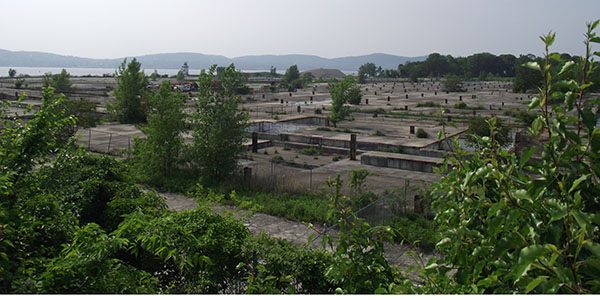
After a state judge shot down a legal challenge by Sleepy Hollow”™s municipal neighbor, village officials are waiting to hear from General Motors Corp. on what”™s next for a planned redevelopment of GM”™s long-vacated automotive assembly plant site on the Hudson riverfront.
Village officials in neighboring Tarrytown last year petitioned state Supreme Court to annul the Sleepy Hollow village board”™s approval of a special permit and concept plan for Lighthouse Landing, an estimated $800 million mixed-use development on a 96-acre property off Beekman Avenue vacated by the Detroit automaker in 1996. The project, scaled back from General Motors Co.”™s initial proposal in 2003, calls for construction of 1,177 residential units, 35,000 square feet of office space, 135,000 square feet of retail, cinema and restaurant space and a 140-room hotel.
Tarrytown officials claimed their municipal neighbor did not take a “hard look” at the project”™s impact on traffic and parking and did not thoroughly review alternative development proposals. But acting Supreme Court Justice James W. Hubert, citing in detail the project”™s “lengthy and contentious” planning approval process, this month ruled that Sleepy Hollow officials had complied with requirements of the State Environmental Quality Review Act and rejected Tarrytown”™s claims.
As the Business Journal went to press last Wednesday, Tarrytown Mayor Drew Fixell said the village had not decided whether to appeal the judge”™s decision.
Sleepy Hollow Mayor Kenneth G. Wray in an announcement of the court decision said it “will allow the village to enter a new and exciting chapter in its history.” The project, he said, will create 1,000 jobs, build new infrastructure serving the entire village and bring numerous new businesses to the area.
“The next step is in General Motors”™ court,” said Sleepy Hollow Village Administrator Anthony Giaccio. “We”™re hoping that they announce a developer soon” who will present a site plan to the village Planning Board for speedy approval.
Giaccio said though GM agreed to select a developer by February this year, “The lawsuit kind of put everything on hold.”
In Detroit, General Motors spokeswoman Ryndee Carney said the company has not chosen a developer for the Sleepy Hollow project. “I don”™t have a time frame for that right now,” she said.
She declined to disclose the number of developers who responded to GM”™s request for proposals issued earlier this year. Giaccio said village officials were told by GM that it had “an optimistic response” to the RFP from developers.
Carney said General Motors continues to work with the state Department of Environmental Conservation on an environmental cleanup of the brownfield site, which has included the removal of chromium, industrial solvents, lead and fuel oil residue. “There”™s more cleanup work that remains to be done,” she said, including dredging contaminated sediment in the Hudson River.
She said GM hopes to soon receive required permits and begin the remaining remediation work next month. The cleanup is expected to take four to five months to complete.
Once cleaned, the land will be capped by the developer during construction, she said.
At GM, “We”™re pleased with the judge”™s decision and we hope that the removal of this challenge will speed up the process of selecting a developer,” Carney said.
The recently decided court case was the latest in a series of lawsuits and financial challenges that for several years have ensnared the Lighthouse Landing project, which was revived after GM emerged from its bankruptcy reorganization in 2009.
GM”™s former development partner, New Jersey-based Roseland Properties L.L.C., pulled out of the project in late 2007, calling it an opportunity that had passed. The project for the last five years was stalled by lawsuits by both General Motors and Tarrytown that challenged Sleepy Hollow”™s environmental review findings for the project.
GM last year agreed to drop further legal action against the village when Sleepy Hollow trustees approved a plan that reduced the project”™s housing component from GM”™s proposed 1,250 units to 1,177 rental and ownership residences. The challenged reduction had been upheld by a state Supreme Court judge.



















